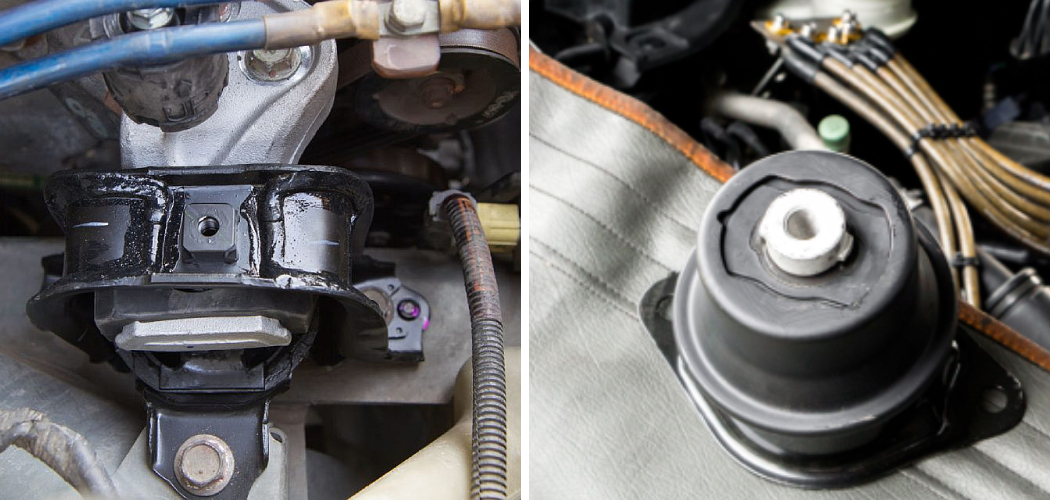Engine mounts are vital components of a vehicle’s engine system. They secure the engine to the chassis and absorb vibrations caused by the engine’s movements. Engine mounts not only keep the engine in place, but they also reduce noise and improve overall driving experience. Therefore, How to Maintain Engine Mounts is crucial for your vehicle’s performance.
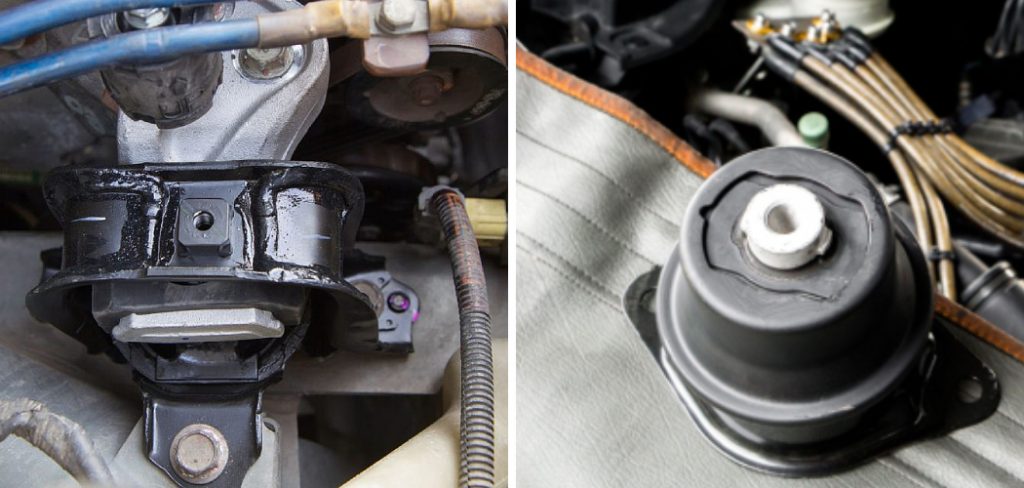
Why is It Important to Maintain Engine Mounts?
1 . Safety
Engine mounts are designed to secure the engine in place and prevent it from moving excessively. This ensures that the engine stays in its designated location, avoiding potential accidents or hazards caused by a loose engine. By maintaining the engine mounts, you are ensuring the safety of yourself and others on the road.
2 . Smooth Ride
When engine mounts are functioning properly, they help to minimize vibrations and excessive engine noise. This helps to provide a smoother, more comfortable ride for both the driver and passengers.
3 . Protection against Damage
Engine mounts not only keep the engine in place but also absorb any shocks or jarring movements that may occur while driving. By maintaining the engine mounts, you are protecting your vehicle from potential damage caused by these forces.
4 . Improved Performance
Engine mounts play a crucial role in the overall performance of your vehicle. A properly maintained engine mount ensures that the engine stays in its optimal position, allowing for better alignment and distribution of power to the wheels. This can result in improved acceleration and handling.
5 . Longevity
Regular maintenance of engine mounts can extend their lifespan, ultimately saving you money and hassle in the long run. By ensuring that the engine mounts are in good condition, you are preventing any potential damage to other components of your vehicle, which can be costly to repair or replace.
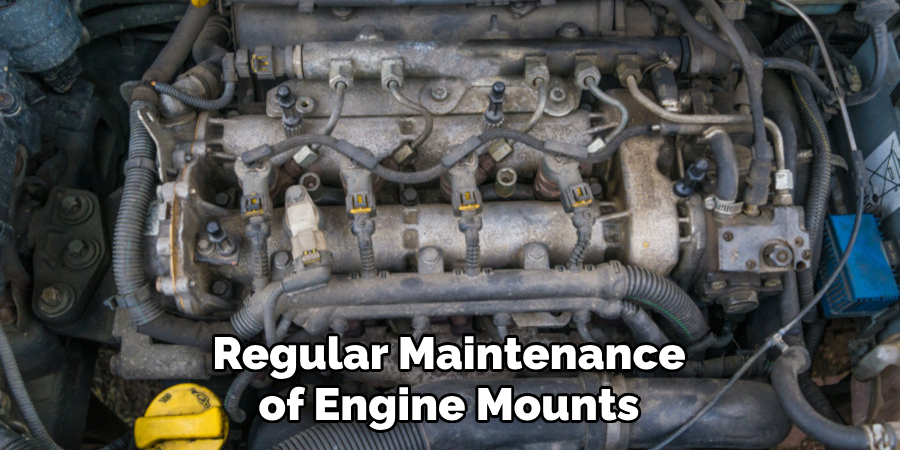
6 . Avoiding Costly Repairs
As mentioned before, maintaining engine mounts can help prevent damage to other parts of your vehicle. This not only saves you money in the long run but also helps avoid costly repairs and downtime for your vehicle.
7 . Environmental Impact
Properly maintained engine mounts can also have a positive impact on the environment. A loose or damaged engine can emit more pollutants, contributing to air pollution. By keeping your engine securely in place, you are helping to reduce emissions and do your part in protecting the environment.
Signs of Worn or Failing Engine Mounts
1 . Vibrations and Shaking
One of the most common signs of worn or failing engine mounts is excessive vibrations and shaking felt while driving. This can be felt in the steering wheel, seat, or floorboard and may increase with acceleration. Worn mounts can cause the engine to become misaligned, leading to these noticeable vibrations.
2 . Engine Movement
Another clear sign of worn engine mounts is excessive engine movement. If you notice your engine shifting or moving excessively while accelerating, braking, or turning, it could be a sign that your mounts are failing. This can also cause the engine to become misaligned, affecting the overall performance of your vehicle.
3 . Unusual Noises
Worn or failing engine mounts may produce unusual noises such as clunking, banging, or even a knocking sound. This is caused by the excessive movement of the engine, which can create stress on other parts and cause them to make noise. If you hear any unusual noises coming from your engine, it’s important to have it checked by a mechanic.
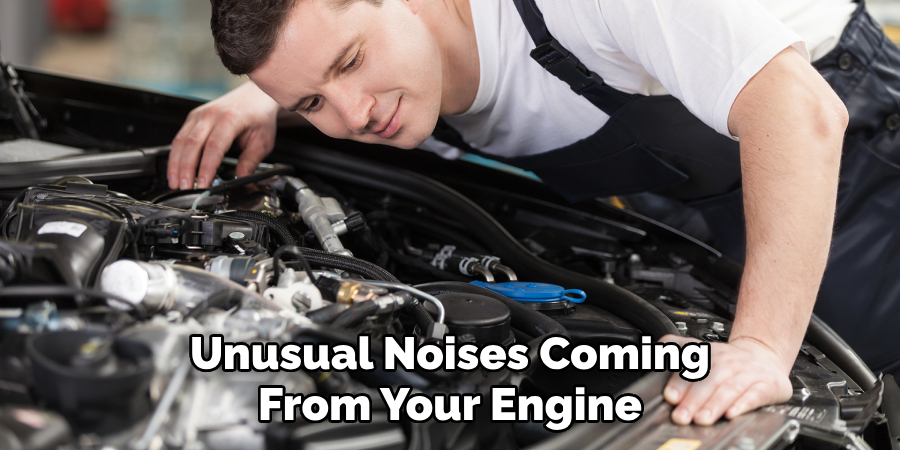
4 . Engine Tilting or Sagging
In some cases, worn or failing engine mounts may cause the engine to tilt or sag to one side. This can be easily observed by lifting the hood and inspecting the position of the engine. If you notice that the engine is not sitting straight and appears tilted, it could be a sign of worn mounts.
5 . Transmission Misalignment
Engine mounts also play a crucial role in keeping the transmission and other drivetrain components aligned. If your mounts are worn or failing, it can cause the transmission to become misaligned, leading to difficulty in shifting gears and other transmission issues.
6 . Excessive Engine Movement
Aside from causing noticeable vibrations and noises, worn engine mounts can also lead to excessive engine movement. This is particularly dangerous as it can cause the engine to come into contact with other parts, resulting in damage or even a fire if left unaddressed.
7 . Check Engine Light
In some cases, worn or failing engine mounts can trigger the check engine light on your dashboard. This is due to the misalignment of the engine causing issues with various sensors and systems within your vehicle. If your check engine light comes on, it’s important to have it checked by a mechanic to determine the cause.
8 . Decrease in Performance and Fuel Efficiency
If your engine mounts are worn or failing, it can affect the overall performance of your vehicle. This is because the engine is not properly supported and may have difficulty functioning at its best. Additionally, misaligned engines can also lead to an increase in fuel consumption, resulting in a decrease in fuel efficiency.
10 Maintenance Tips on How to Maintain Engine Mounts
1 . Visual Inspection of Engine Mounts
One of the most important maintenance tips for engine mounts is to perform a visual inspection regularly. This involves checking for any signs of wear, damage or corrosion on the mounts. If you notice any cracks, leaks or other issues, it’s important to address them immediately.
2 . Check Engine Mount Bolts
It’s also crucial to check the bolts that hold the engine mounts in place. Over time, these bolts can loosen or become damaged, causing the mounts to shift and potentially leading to further damage. Make sure to tighten any loose bolts and replace any damaged ones as needed.
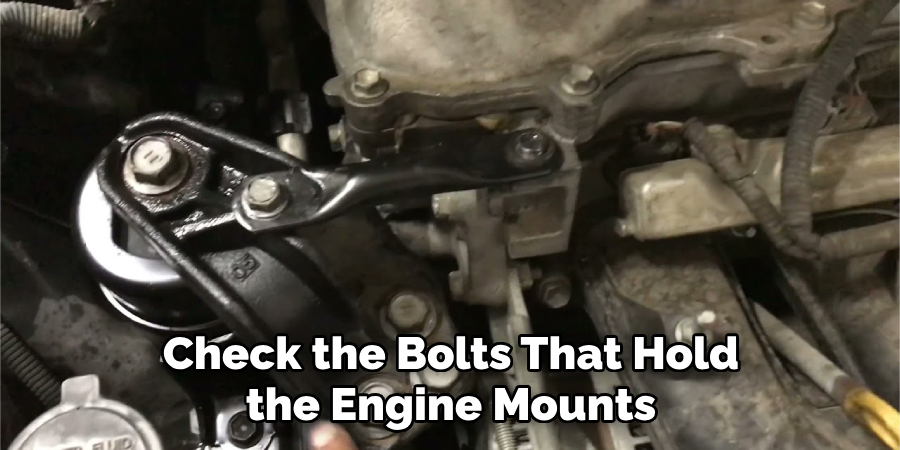
3 . Monitor Engine Vibrations
Excessive engine vibrations can be a sign of worn or damaged engine mounts. It’s important to pay attention to any unusual vibrations while driving and have them checked by a mechanic if necessary. Ignoring these vibrations can lead to more serious damage over time.
4 . Keep Engine Mounts Clean
Dirt and debris can build up on engine mounts, causing corrosion or other damage. Regularly cleaning the mounts with a mild detergent and water can help prevent this buildup and extend their lifespan. Be sure to dry the mounts thoroughly after cleaning.
5 . Inspect for Fluid Leaks
Engine mounts can also develop leaks over time, leading to decreased performance and potential damage. It’s important to regularly check for any fluid leaks around the mounts and have them repaired as soon as possible.
6 . Perform Regular Maintenance on Other Engine Components
Proper maintenance of other engine components, such as the transmission and exhaust system, can also help prevent excessive stress on the engine mounts. Regularly checking and replacing worn or damaged parts can help keep the engine running smoothly and reduce strain on the mounts.
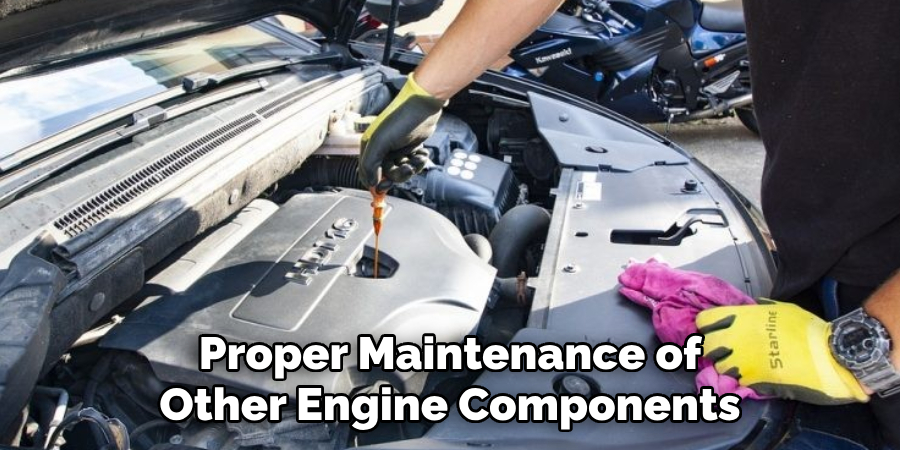
7 . Avoid Excessive Weight or Overloading
Overloading a vehicle or carrying too much weight can put added strain on engine mounts, potentially causing them to fail. It’s important to adhere to weight limits and avoid overloading the vehicle, especially when driving on rough terrain.
8 . Check for Proper Alignment
Misaligned engine mounts can cause significant damage and affect the performance of a vehicle. Make sure to have the alignment checked regularly by a professional mechanic and have any issues corrected as soon as possible.
9 . Consider Upgrading to Performance Mounts
For vehicles that undergo heavy use or performance driving, it may be beneficial to upgrade to stronger and more durable engine mounts. These performance mounts can handle higher levels of stress and help prolong the lifespan of the engine.
10 . Follow Manufacturer’s Recommendations
Finally, always follow the manufacturer’s recommended maintenance schedule for engine mounts. This will ensure that they are inspected, cleaned, and replaced as needed to keep the engine running smoothly and prevent any potential damage.
Troubleshooting and Diagnosing Engine Mount Issues
1 . Testing Engine Movement
One of the simplest ways to diagnose engine mount issues is by testing the movement of the engine. With the help of an assistant, put the vehicle in park and set the emergency brake. Have your assistant turn on the ignition while you visually inspect the engine for any excessive movement.
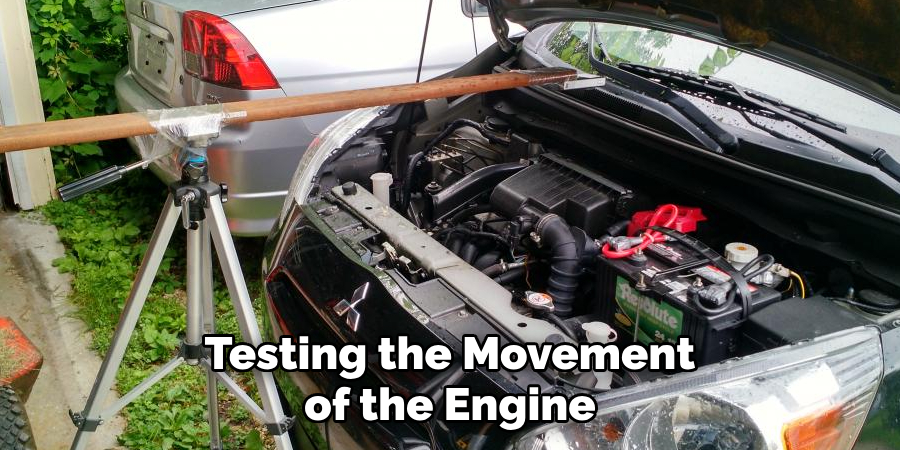
If there is noticeable movement in one specific direction, it could indicate a worn or damaged engine mount on that side. You can repeat this test on all sides of the engine to pinpoint the exact location of the issue.
2 . Performing a Visual Inspection
Another way to troubleshoot and diagnose engine mount issues is by performing a visual inspection. This involves physically looking at the engine mounts for any signs of wear or damage. Look for cracks, tears, or excessive movement in the mounts. Also, check for any oil leaks or fluid buildup around the mounts as this could indicate a faulty mount. If you notice any issues during your visual inspection, it’s best to replace the engine mount as soon as possible.
3 . Check for Vibration
Engine mount issues can also cause excessive vibration in the vehicle. While driving, if you notice a significant amount of vibration coming from the engine, it could be a sign of a worn or damaged mount. The vibrations may also be more noticeable when idling or at low speeds. If you experience this type of issue, have your engine mounts checked to determine if they need replacement.
4 . Listen for Unusual Noises
In addition to visual and physical signs, unusual noises can also indicate engine mount issues. If you hear clunking, banging, or rattling noises coming from the engine while driving, it could be a sign of a damaged mount. These noises can also occur when switching between gears or accelerating quickly. It’s essential to have these noises checked out by a mechanic as soon as possible.
5 . Consider Age and Mileage
As with any other vehicle component, age and mileage can also play a factor in engine mount issues. Over time, the rubber components of the mounts can wear down, resulting in reduced support for the engine. If your vehicle has high mileage or is older in age, it’s important to regularly inspect and replace the mounts as needed.
6 . Consult a Professional Mechanic
If you’re unsure about the condition of your engine mounts or are experiencing any of the above-mentioned issues, it’s best to consult a professional mechanic for an inspection. A trained mechanic will be able to accurately diagnose and address any engine mount issues to ensure your vehicle is running smoothly. They will also be able to recommend the best course of action for your specific vehicle and its needs.
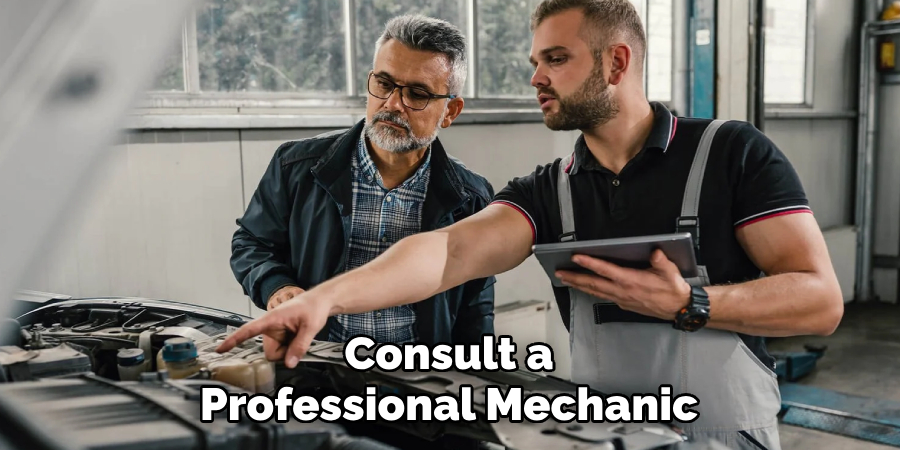
Additional Tips for Maintaining Engine Mounts
1 . Do Not Ignore Warning Signs
It’s essential to pay attention to any warning signs that your vehicle may be showing, including those related to engine mount issues. Ignoring these signs can lead to further damage and potentially more expensive repairs in the future. If you notice anything out of the ordinary with your vehicle, don’t hesitate to have it checked by a professional.
2 . Check Mounts During Routine Maintenance
During routine maintenance such as oil changes, make sure to have your mechanic check the engine mounts. This will help catch any potential issues early on before they become more severe and costly to repair.
3 . Avoid Aggressive Driving
Aggressive driving can put unnecessary strain on your vehicle’s engine and components, including the mounts. To prevent premature wear and tear, try to avoid aggressive driving habits such as rapid acceleration and hard braking.
4 . Use Quality Engine Mounts
When it comes time to replace your engine mounts, make sure to use high-quality replacements. Cheap or low-quality mounts may not provide the necessary support for your engine, leading to further issues down the line. Consult with a trusted mechanic or do research to find the best engine mounts for your specific vehicle.
5 . Consider Upgrading to Performance Mounts
For those who own high-performance vehicles or engage in motorsports, standard engine mounts may not provide enough support and durability. In these cases, it’s beneficial to consider upgrading to performance mounts designed specifically for high-horsepower engines.
Frequently Asked Questions
What Precautions Should I Take While Driving to Avoid Damage?
While driving there are certain precautions you should take to avoid damage of engine mounts. These include avoiding potholes and rough road surfaces, accelerating slowly and braking gently. You should also ensure your car has the correct type of engine mount installed for its make and model.
How Often Should I Check My Engine Mounts?
Engine mounts should be checked regularly for any signs of damage or wear. As a general rule, they should be inspected every 6 months or every 10,000 miles. However, if you notice any unusual vibrations, noises or movement while driving, it is important to have them checked immediately.
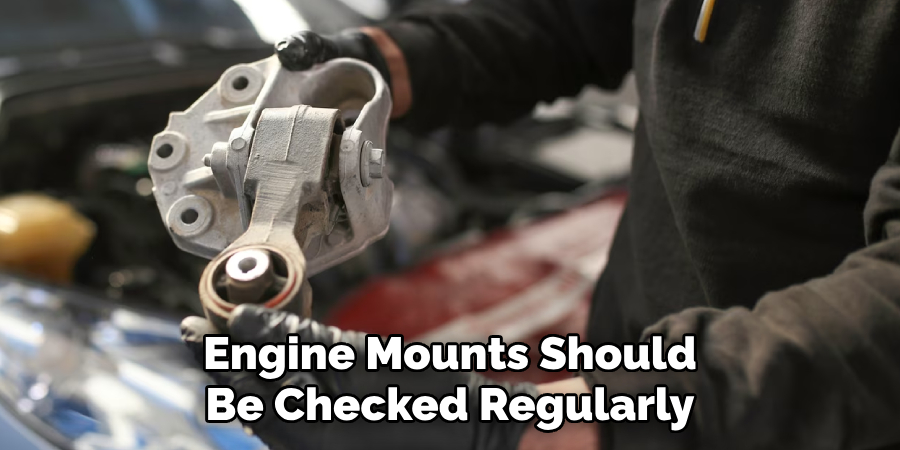
Can I Replace My Engine Mounts Myself?
Replacing engine mounts can be a difficult and time-consuming task, so it is not recommended for inexperienced individuals. It requires proper tools and equipment, as well as knowledge of the engine mount placement and installation process. It is best to have a professional mechanic handle this task.
What Happens If I Do Not Replace My Damaged Engine Mounts?
If damaged engine mounts are not replaced, it can result in a number of issues. This includes increased engine vibrations, misalignment of the engine and transmission, and potential damage to other components such as belts, hoses and wiring. It is important to address any damaged engine mounts promptly.
How Can I Tell If My Engine Mounts Are Damaged?
There are several signs that may indicate your engine mounts are damaged. These include excessive engine vibrations, loud noises or banging sounds when accelerating or shifting gears, and visible cracks or tears on the mount itself. If you notice any of these signs, it is important to have them inspected by a mechanic.
Are There Different Types of Engine Mounts?
Yes, there are various types of engine mounts available for different makes and models of cars. The most common types include solid mounts, hydraulic mounts and electrically controlled mounts. It is important to ensure you have the correct type of mount for your specific vehicle to avoid any potential issues.
Conclusion
Now you know how to maintain engine mounts, but the job is not done yet. Engine mounts are often overlooked as they tend to last for a long time without any issues. However, it is important to regularly check and maintain them to avoid costly repairs in the future.
In conclusion, engine mounts play a crucial role in ensuring the smooth functioning of your vehicle’s engine. By following the steps outlined in this guide, you can keep your engine mounts in good condition and extend their lifespan. Remember to always consult a professional mechanic if you encounter any issues or are unsure about how to properly maintain your engine mounts.

